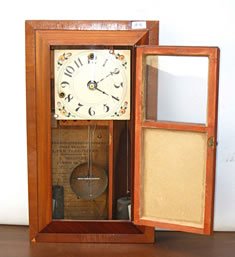The quantity and complexity of the prehistoric polychrome cave paintings found in Missouri’s Picture Cave, like the renowned depiction of Red Horn, are unmatched compared to other prehistoric sites in North America. Selkirk Auctioneers of downtown Saint Louis is seeking the next stewards of Picture Cave and the surrounding 43+ acres of land during a September 14th auction.
In a remote area of eastern Missouri, roughly 50 miles outside of the bustling urban center of Saint Louis, the prairies meet the Ozark plateau, and a mystical plat of land richly packed with natural resources conceals a well-known subterranean masterpiece that has come to be known as Picture Cave. Housing what some scholars believe to be the greatest assemblage of indigenous American polychrome paintings ever discovered in the ancient cultural area known as Meso-America, the two-cave system was once an important ritual site for early Mississippian culture. Today it functions as a vital ecosystem for one of the densest populations of the endangered Indiana gray bat.
With an eye on the important, future stewardship of this land and the caves nestled within it, Picture Cave will be offered at auction September 14, 2021 by Selkirk Auctioneers & Appraisers of St. Louis on behalf of its current owners. A three-generation family whose members originally purchased the property in 1953, it was used primarily for hunting. The cave’s breathtaking iconography rests at the pinnacle of land teeming with a natural spring, rolling hills, and wonderful views that only accentuate the magnitude of one of America’s greatest archaeological finds. All 43 encompassing acres of real estate are included in the property auction, which is estimated to sell for $1,000,000-3,000,000 USD.
Over a millennia ago, native tribes, especially the Osage, roamed and controlled vast swaths of land from what is now known as the Ohio River Valley to Kansas, including the property where Picture Cave is situated. These early settlers utilized caves for various reasons, the most obvious being the opportunity for shelter and protection. Caves were also mined for powerful organic resources, including gypsum crystals and epsomite, used in trade and for medicinal purposes. What sets Picture Cave apart from almost any other is the extraordinarily well-preserved and comprehensive collection of pictographs and iconography. The images’ significance is comparable to that of major ancient cities like Cahokia and Chaco Canyon, which once existed directly across the Mississippi River from modern St. Louis and in northwest New Mexico, respectively.
Since the research of this invaluable piece of history began in 1990, several selfless individuals, institutional grants, foundational funding, Osage members, and the landowners have made it possible to link documented facts with artistic interpretation.
For archeologists, Picture Cave represents a vast spiritual convention in the recesses of the Earth that early regional civilizations used for sacred rituals, rites of passage, vision quests, and burials. Scholarly research dates the images to approximately 900-1100 CE. They are extensively documented in the 20-chapter fully-illustrated book, Picture Cave: Unraveling the Mysteries of the Mississippian Cosmos, published in 2015 by the University of Texas Press.
Several field experts, archeologists, Native American tribe members, and artists comprise the Picture Cave Interdisciplinary Project to accomplish this wonderful resource guide to understanding Picture Cave and its preservation. These experts include such renowned names as Patty Jo Watson, Distinguished Professor Emeritus of Anthropology at Washington University in St. Louis, and Dr. Jan Simek from the University of Tennessee. As part of ongoing research in Picture Cave, Dr. Simek has compiled and compared geochemical analyses of prehistoric pigment, employed AMS radiocarbon dating and spatial order of iconography. The findings have been published several times in American Antiquity, the professional journal published by Cambridge University Press for the Society for American Archaeology.
For more information on Picture Cave and the September 14th auction, visit https://www.selkirkauctions.com/picturecave or call 314.696.9041 to speak with Selkirk executive director, Bryan Laughlin, or auctioneer & realtor, Amelia Jeffers for more information on registration and the bidding process.

One of 290+ glyphs found on the walls of Picture Cave, Red Horn was one of the five sons of Earthmaker, whom the Creator fashioned with his own hands and sent to earth to rescue humanity. Image credit Alan Cressler



